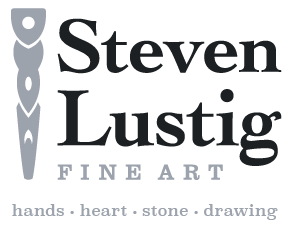Defining Creativity
12/28/2020
Creativity exists in us all. For many it lays dormant, yet it’s part of being alive, of thinking, being conscious, of being human. Creativity is unstable, unpredictable, unreliable and often spectacular all at the same time. Creativity sometimes requires a context, an equation or supposition, but usually answers its own questions when it’s ready. It can happen after years of study, training and hard work or in an instant in the shower. Creativity can be beautiful and a consternation. Alive one day and at rest another. Yet it can be developed in all of us. Especially in the young, who, if you can get them early enough, can be taught to keep themselves open to the possibilities and potential of tapping into this very human exercise.
As an artist I have lived closely with this subject for a lifetime. As a educator I have taught this subject to others. When I first entered into this arena, I had to ask, how do you define the indefinable? Creativity inherently defies a specific definition. It can be physical, spiritual and physiological, in any combination, at any given moment. It can flow one minute, run you over the next and be as allusive as a hummingbird. And yet there it is, a whole book with thousands of words, written by incredibly smart people from all over the planet on something that I took for granted and never cared to dissect or analyze.
The beginning of creativity lies in large part with genetics. The notion of the family, the gene pool, who not only may be creative themselves, but who understand that inherently creative people sometimes need little more than some independent space to connect to what already resides in them. It’s through our genes that we carry forward the knowledge of the past, which forms the basis for the future.
Once you have some feel for the nature of the individual, the next most important element to creativity is the immediate surrounding environment. The importance of forming a creative environment that fosters an individual's creative experience cannot be overstated. Creativity cannot flourish where repression lives. It requires some level of an absence of constraints. Where people are free to exercise their creativity and form their own creative experience with no regard for immediate results or judgments. It is only through “imaginative play” where people are free to explore their own minds, to form thoughts, ideas, combinations, to incubate, illuminate and articulate with no regard for explicit results that real creativity can truly thrive.
Creating a rich environment is essential to both fostering and sustaining a lifetime of creativity. It’s from this combination of parents and home that you create and sustain creative, self-motivated people.
Once you have one, what do you do with them? Training and skill sets for highly motivated, creative people are usually attained at some great depth, but not always with great ease. It is not enough to pass over practice and technique just because you are talented. The notion of repetition to subconsciousness is essential to freeing the individual to reach truly creative space. Moving from conscious to precocious to subconscious. The connection of the hand, to the eye, to the mind, to the work is a vast subject in of itself. The ability to minimize debilitating external constraints, including, the ability to let pass by those with too many opinions and little experience or ability of their own is essential.
Most youths who achieved eminence are characterized by high intellectual traits, but also persistence of motive and effort, confidence of their abilities and great strength or force of character which comes from a deep internal belief in self and the willingness to exert or exercise the gift.
The notion of convergent and divergent thinking as two distinct entities breaks creativity down into too small, inoperable pieces. Divergent and convergent thinking happens together as in the flow of a river where the water sometimes speeds up as it passes between two rocks and then splits apart as it approaches another, coming to a co-mingling rest in a pool before its begins on its way yet again. It may twist and turn, even reverse course before coming to a new path. There is interconnection to creative thought, where seemingly disparate subjects inform each other, where formation and reformation happen continuously, where ideas are chained and unchained in cognitive, conceptual combinations. This is where old ideas are re-associated with new information to form new paths.
The more you work, the more you develop your creative ideas, the more you produce, and mature, and the more likely you are to create something of lasting substance. Ask any creative person who has lived to see any of what they make be seen in the public eye and they will tell you that for every second of light on their work in public, there are thousands of hours spent toiling in obscurity and silence, with no guarantee that anyone will ever see what they’ve produced.
Creativity is a large and diverse subject. While it may reside in us all, it is rarely given life. Most people have never had someone to help bring out their creativity, to teach them the arts and most importantly, to make being creative okay to express. Creativity takes nurturing and time. It takes patience and persistence. It’s only through time and practice does creativity begin to express itself.
